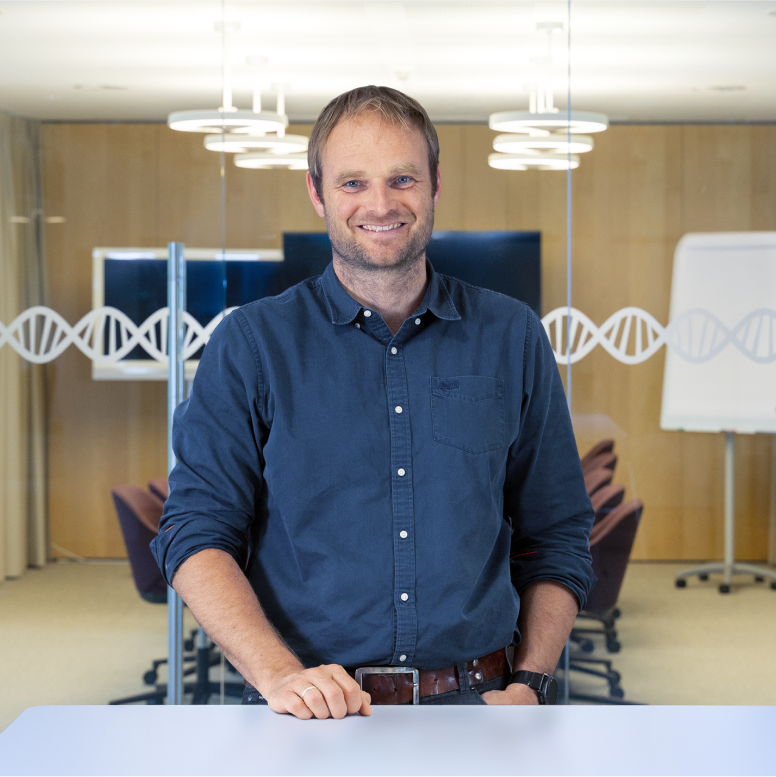Digital Twins Are Transforming Diagnostic System Development

Posted by:
Fabian Eckermann
Published on:
Nov 12, 2025
Digital transformation has become more than a buzzword in diagnostics and laboratory automation — it’s a survival strategy. At HSE•AG, we’ve embraced this shift with a modular digital engineering approach including Digital Twin.
But what is a digital twin in this context?
At HSE•AG, we define it as a dynamic virtual representation of a diagnostic or laboratory system that combines simulation, model-based engineering, real-world experimental data and validation, and workflow modeling.
Key Benefits
The key benefits of our digital twin approach are:
- Real-Time System Insight
Continuous data acquisition paired with virtual models gives developers live visibility and forecast of system behavior and performance. - Reduced Experimental Load
Simulations enable early validation and design optimization — minimizing time and resources spent on physical testing. - Accelerated Development
A tailored digital model allows for faster iterations, early risk mitigation, and better collaboration.
Our Digital Twin approach brings together modeling, simulation, and real-world feedback to accelerate development, communication, and reduce risk — especially in complex diagnostic systems.
The Digital Twin Architecture
Our digital twin builds on five core pillars:
1. Simulation
Simulation forms one behavioral core pillar of the digital twin. In collaboration with CADFEM experts, we use high-fidelity tools to create virtual models of thermal, fluidic, and structural behavior.
→ Value: Enables early-stage design optimization and virtual prototyping with significantly less need for physical hardware and testing. Fast design adaptions and iterations.
2. Modeling (MATLAB, Enterprise Architect)
Complementing simulation, simplified physical models help predict performance, adjust parameters, and define system behavior.
→ Value: Supports outcome prediction, correction strategies, and instrument calibration with minimal resource investment.
3. Model-Based Systems Engineering (MBSE)
MBSE provides a structural and logical backbone of the system architecture. It captures interfaces, functional breakdowns, and cross-discipline dependencies using tools like Enterprise Architect.
→ Value: Delivers traceability, interface management, impact assessment, and systematic risk mitigation across the lifecycle.
4. Experiments & Sensing
Real-world data doesn’t just validate the digital twin — it keeps it alive. Sensors feed performance data back into the model for live calibration and accuracy.
→ Value: Ensures real-time feedback, enables model validation, and improves predictive performance.
5. Workflow Modeling
From sample loading to result generation, every operational step is digitally mapped. Workflow modeling helps us simulate full laboratory processes, detect inefficiencies, and automate intelligently.
→ Value: Drives quality reproducibility, timing optimization, and efficient material flow, which are all critical in regulated diagnostic workflows.
Together, these five pillars provide a flexible, scalable foundation for building robust digital engineering tailored to real-world diagnostic systems. Whether optimizing throughput, verifying designs, or syncing cross-functional teams, each module adds precision and power to the engineering process.
Results From a Real-World Client Project
In one of our recent diagnostic platform developments, we applied this approach to:
- Validate thermal design digitally — no added lab cycles needed
- Streamline collaboration across international engineering teams
- Optimize sample throughput using simulation-backed workflow models
Looking Ahead
We're expanding our digital twin capabilities to include:
- Real-time data streaming from functional prototypes
- Dashboard visualization for enhanced traceability
- Broader connectivity from requirements down to sensor behavior
Want to know more?
Contact Fabian Eckermann and discover how we can help you innovate faster and smarter.

Fabian Eckermann
Fabian Eckermann, Head of Systems Engineering at HSE•AG, is an expert in leading cross functional and multisite project teams for complex products from the idea to launch.
He has worked in medical device and life science project management since 2008, managing projects with companies ranging from start-ups to global international enterprises. Fabian specializes in MDR and IVDR systems and process development in regulated environments.
He holds a Dr. Dipl. Ing. Material Sciences from ETH/EMPA as well as a Dipl. Ing. Material Sciences from ETH, Switzerland.
